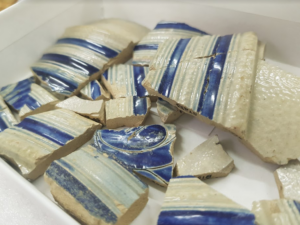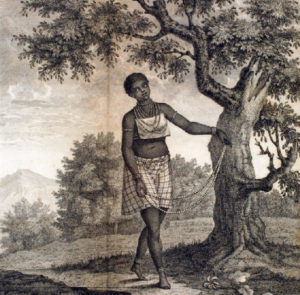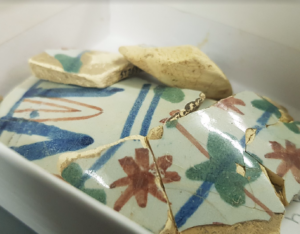Enslaved Community
In 1738 the British slave trading ship, Liverpool Merchant, arrived on the Potomac after a voyage of 167 days and consigned 70 enslaved Africans, primarily from Senegambia, Gold Coast, and St. Helena Island, to Thomas Lee for sale to nearby plantation owners. Some of these enslaved laborers may have been purchased by Lee and tasked to build Stratford’s Great House and its dependencies. Their tasks would have included cooking meals, digging and firing clay for bricks, and working as launderers, blacksmiths, plasterers, carpenters, and masons.
By the time Stratford was completed around 1742, an estimated 200 enslaved Africans and African Americans were living at Stratford and other properties owned by Thomas Lee.
The enslaved Africans brought their culture and skills to Stratford Hall. Many of them would have known the art of blacksmithing and masonry, as well as sophisticated farming techniques. This knowledge was essential in the success of a working plantation. Those who worked as cooks were also skilled artisans, introducing the Lees and European indentured laborers to some of the dishes from West Africa.
Enslaved Africans and African Americans lived and worked throughout the plantation grounds. The field laborers slept in crowded quarters and worked sun-up to sun-down. Those laboring in the domestic area resided in the house itself, as well as in the adjacent stone quarters, kitchen, laundry, and other outbuildings, and they were on-call 24 hours a day.
The enslaved community at Stratford Hall was essential to the Lee family. They worked the fields and served as domestics in the Great House, as postillions, maids, waiters, footmen, and cooks. Their labor allowed the Lees a lavish lifestyle. Some of their names are recorded in family documents, which allows us to interpret their lives more vividly, while the names and details of others have been lost in history. Through archival and archaeological research and oral history, we are learning more about the lives of the enslaved community at Stratford Hall and are continually updating the tours and interpretation of their history and legacy.




